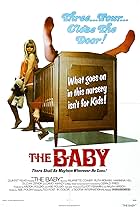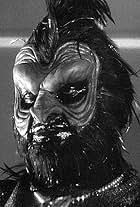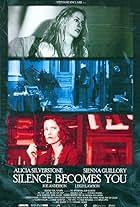
aimless-46
Joined Dec 2003
Welcome to the new profile
We're still working on updating some profile features. To see the badges, ratings breakdowns, and polls for this profile, please go to the previous version.
Ratings639
aimless-46's rating
Reviews717
aimless-46's rating
As a who-done-it, "Berserk" (1967) doesn't have much going for it. This is not one of those mystery stories that carefully drop clues until at the end you can look back and see how cleverly they accomplished a slow reveal. Instead you look back in irritation at the low brain wattage script. The same goes for any psychological horror - a viewer needs to expend considerable suspension of disbelief energy just to avoid cracking up at the lameness of the whole thing.
On the other hand it does offer film students an excellent example of how to assemble a low budget full length feature presentable enough to get a fairly wide distribution. You build it around an aging but high profile actress willing to chew the scenery enough to function as the central focus, and you set her up with both a female antagonist and a male love interest to play against.
Then you turn the second unit loose to capture a wide range of deverting footage of real-life circus acts, probably at a modest cost as it provides considerable promotional benefit to the circus. This footage provides almost half the film's running length and the stages and equipment about 90% of its production design. And they do a convincing job of inserting cuts of Joan Crawford and Ty Hardin into these sequences.
A final element is a waif-like young ingenue and it is here that the film kind of crashes and burns. While Judy Geeson was an inspired choice her utilization runs afoul of Joan Crawford's ego or presumed star status. Geeson has huge exploitation which is why Producer Herman Cohan and director Jim O'Connolly awkwardly insert her into the story late in the film, something they normally do quite well. But here, rather than lingering shots of her in showgirl costume she is seen mostly in wide master shots and fast cuts.
On the other hand it does offer film students an excellent example of how to assemble a low budget full length feature presentable enough to get a fairly wide distribution. You build it around an aging but high profile actress willing to chew the scenery enough to function as the central focus, and you set her up with both a female antagonist and a male love interest to play against.
Then you turn the second unit loose to capture a wide range of deverting footage of real-life circus acts, probably at a modest cost as it provides considerable promotional benefit to the circus. This footage provides almost half the film's running length and the stages and equipment about 90% of its production design. And they do a convincing job of inserting cuts of Joan Crawford and Ty Hardin into these sequences.
A final element is a waif-like young ingenue and it is here that the film kind of crashes and burns. While Judy Geeson was an inspired choice her utilization runs afoul of Joan Crawford's ego or presumed star status. Geeson has huge exploitation which is why Producer Herman Cohan and director Jim O'Connolly awkwardly insert her into the story late in the film, something they normally do quite well. But here, rather than lingering shots of her in showgirl costume she is seen mostly in wide master shots and fast cuts.
I first saw "Rio Lobo" (1970) at the base theater during my Air Force days. It was obvious even then that the film was a relic. That the western genre had moved past it and that as an acting for the camera director Howard Hawks had already been eclipsed by edgy western directors like Sam Peckinpah, Monte Hellman, Michael Winner, and Don Medford. Even the worst episode of "Cimarron Strip" was light years ahead of Hawks' post "Red River" westerns. George Roy Hill's only western also appeared during this time as did quasi-westerns like "Boxcar Bertha" - if you were into railroad scenes - and few were clamoring for more Howard Hawks features.
That said "Rio Lobo", for all its limitations, unexpectedly managed a very entertaining if unlikely pairing of John Wayne and Jennifer O'Neill, in something reminiscent of "The Wrecking Crew's" Dean Martin and Sharon Tate combination. The film even goes out with a quasi romantic ending, you imagine that the relationship between Cord McNally and Shasta Delaney is not over - what with her preference for more mature and "comfortable" men. The acting bar is low for Cover Girl models but O'Neill's performance is not painful and requires only a modest suspension of disbelief from viewers. And she looks great in period costumes and riding outfits.
That said "Rio Lobo", for all its limitations, unexpectedly managed a very entertaining if unlikely pairing of John Wayne and Jennifer O'Neill, in something reminiscent of "The Wrecking Crew's" Dean Martin and Sharon Tate combination. The film even goes out with a quasi romantic ending, you imagine that the relationship between Cord McNally and Shasta Delaney is not over - what with her preference for more mature and "comfortable" men. The acting bar is low for Cover Girl models but O'Neill's performance is not painful and requires only a modest suspension of disbelief from viewers. And she looks great in period costumes and riding outfits.




























